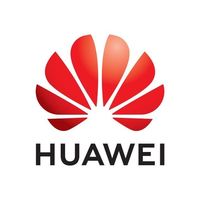Apple’s Strategic Moves in a Shifting Market Landscape
May 29, 2025, 9:56 am

Location: United States, California, Cupertino
Employees: 10001+
Founded date: 1976
Total raised: $100M
Apple is at a crossroads. The tech giant faces a storm in its second-largest market: China. Sales are slipping. Competition is fierce. To combat this, Apple has raised trade-in values for iPhones in China. This move is a lifeline, a way to breathe life into waning sales.
The iPhone 15 Pro Max now boasts a trade-in value of up to 5,700 yuan, a slight bump from 5,625 yuan. The iPhone 15 Pro has also seen an increase, now valued at 4,750 yuan, up from 4,725 yuan. These adjustments may seem small, but they signal a larger strategy. Apple is trying to entice customers back into its ecosystem.
Why the urgency? Apple’s market share in China has dipped from 15% to 13%. Shipments fell by 8% year-on-year in the first quarter. Local competitors like Xiaomi and Huawei are gaining ground. They are not just nipping at Apple’s heels; they are charging ahead.
Xiaomi has emerged as a formidable player. It recently launched the Xiaomi 15S Pro, equipped with an in-house chip. This is a significant leap. It shows that Xiaomi is not just competing; it’s innovating. The company has committed nearly $7 billion to chip development over the next decade. This is a bold statement of intent.
Huawei, too, is on the rise. After a challenging period, it has made a stunning comeback in its home market. Breakthroughs in chip technology and aggressive product launches have revitalized its brand. Apple is not just facing competition; it’s facing a revolution.
But the challenges extend beyond competition. Apple’s supply chain is under scrutiny. Most of its iPhones are manufactured in China, primarily through Foxconn. The geopolitical landscape complicates matters. U.S. tariffs loom large. President Trump has hinted at a 25% tariff on iPhones not made in the U.S. This could significantly raise prices. A U.S.-made iPhone could cost much more than the current $1,000 starting price for the iPhone 16 Pro.
Apple has been exploring production in India. However, this move is fraught with challenges. Trump has expressed a preference for Apple to manufacture in the U.S. This puts Apple in a tight spot. It must navigate a complex web of political and economic pressures.
The recent trade-in price increases are a tactical response to these pressures. Apple is trying to keep its customers engaged. By offering more for old devices, it hopes to encourage upgrades. This is crucial in a market where loyalty is waning.
The Chinese consumer is evolving. They are more price-sensitive and brand-conscious than ever. Apple’s premium pricing strategy is under threat. The allure of high-end features from competitors is hard to ignore.
Apple’s recent actions reflect a broader trend in the tech industry. Companies are adapting to a rapidly changing landscape. They are innovating, cutting costs, and finding new ways to attract customers.
In the U.S., the stock market is reacting to these developments. Analysts are keeping a close eye on Apple. The company is a bellwether for the tech sector. Any misstep could send ripples through the market.
Jim Cramer, a prominent market commentator, has expressed concern about Apple. He notes that the company is facing significant challenges. The trade-in price increases may not be enough to offset the looming tariff threats.
Other companies are also feeling the pressure. Ross Stores saw shares plummet by 13% after withdrawing its full-year guidance. Deckers Outdoor shares dropped over 19% despite beating earnings expectations. The market is jittery. Uncertainty is the name of the game.
In contrast, some companies are thriving. Intuit’s shares jumped nearly 7% after strong quarterly earnings. Barclays raised its price target for Ralph Lauren, recognizing its strong performance.
Tesla is also seeing a resurgence. Analysts believe the “dark chapter” for the company is over. They have boosted its price target, reflecting renewed confidence in its future.
As the market shifts, companies must adapt. They must innovate and respond to consumer demands. Apple is no exception. The trade-in price increases are a step in the right direction, but they are just one piece of a larger puzzle.
The road ahead is fraught with challenges. Apple must navigate competition, tariffs, and changing consumer preferences. It must find a way to maintain its premium brand image while remaining accessible.
In this high-stakes game, every move counts. Apple’s ability to adapt will determine its future. The company is not just fighting for market share; it’s fighting for its identity.
In conclusion, Apple’s recent trade-in price increases reflect a strategic response to a shifting market landscape. The company is trying to galvanize sales in China amid fierce competition. However, the challenges are significant. The road ahead is uncertain, but one thing is clear: Apple must innovate and adapt to survive. The stakes have never been higher.
The iPhone 15 Pro Max now boasts a trade-in value of up to 5,700 yuan, a slight bump from 5,625 yuan. The iPhone 15 Pro has also seen an increase, now valued at 4,750 yuan, up from 4,725 yuan. These adjustments may seem small, but they signal a larger strategy. Apple is trying to entice customers back into its ecosystem.
Why the urgency? Apple’s market share in China has dipped from 15% to 13%. Shipments fell by 8% year-on-year in the first quarter. Local competitors like Xiaomi and Huawei are gaining ground. They are not just nipping at Apple’s heels; they are charging ahead.
Xiaomi has emerged as a formidable player. It recently launched the Xiaomi 15S Pro, equipped with an in-house chip. This is a significant leap. It shows that Xiaomi is not just competing; it’s innovating. The company has committed nearly $7 billion to chip development over the next decade. This is a bold statement of intent.
Huawei, too, is on the rise. After a challenging period, it has made a stunning comeback in its home market. Breakthroughs in chip technology and aggressive product launches have revitalized its brand. Apple is not just facing competition; it’s facing a revolution.
But the challenges extend beyond competition. Apple’s supply chain is under scrutiny. Most of its iPhones are manufactured in China, primarily through Foxconn. The geopolitical landscape complicates matters. U.S. tariffs loom large. President Trump has hinted at a 25% tariff on iPhones not made in the U.S. This could significantly raise prices. A U.S.-made iPhone could cost much more than the current $1,000 starting price for the iPhone 16 Pro.
Apple has been exploring production in India. However, this move is fraught with challenges. Trump has expressed a preference for Apple to manufacture in the U.S. This puts Apple in a tight spot. It must navigate a complex web of political and economic pressures.
The recent trade-in price increases are a tactical response to these pressures. Apple is trying to keep its customers engaged. By offering more for old devices, it hopes to encourage upgrades. This is crucial in a market where loyalty is waning.
The Chinese consumer is evolving. They are more price-sensitive and brand-conscious than ever. Apple’s premium pricing strategy is under threat. The allure of high-end features from competitors is hard to ignore.
Apple’s recent actions reflect a broader trend in the tech industry. Companies are adapting to a rapidly changing landscape. They are innovating, cutting costs, and finding new ways to attract customers.
In the U.S., the stock market is reacting to these developments. Analysts are keeping a close eye on Apple. The company is a bellwether for the tech sector. Any misstep could send ripples through the market.
Jim Cramer, a prominent market commentator, has expressed concern about Apple. He notes that the company is facing significant challenges. The trade-in price increases may not be enough to offset the looming tariff threats.
Other companies are also feeling the pressure. Ross Stores saw shares plummet by 13% after withdrawing its full-year guidance. Deckers Outdoor shares dropped over 19% despite beating earnings expectations. The market is jittery. Uncertainty is the name of the game.
In contrast, some companies are thriving. Intuit’s shares jumped nearly 7% after strong quarterly earnings. Barclays raised its price target for Ralph Lauren, recognizing its strong performance.
Tesla is also seeing a resurgence. Analysts believe the “dark chapter” for the company is over. They have boosted its price target, reflecting renewed confidence in its future.
As the market shifts, companies must adapt. They must innovate and respond to consumer demands. Apple is no exception. The trade-in price increases are a step in the right direction, but they are just one piece of a larger puzzle.
The road ahead is fraught with challenges. Apple must navigate competition, tariffs, and changing consumer preferences. It must find a way to maintain its premium brand image while remaining accessible.
In this high-stakes game, every move counts. Apple’s ability to adapt will determine its future. The company is not just fighting for market share; it’s fighting for its identity.
In conclusion, Apple’s recent trade-in price increases reflect a strategic response to a shifting market landscape. The company is trying to galvanize sales in China amid fierce competition. However, the challenges are significant. The road ahead is uncertain, but one thing is clear: Apple must innovate and adapt to survive. The stakes have never been higher.
